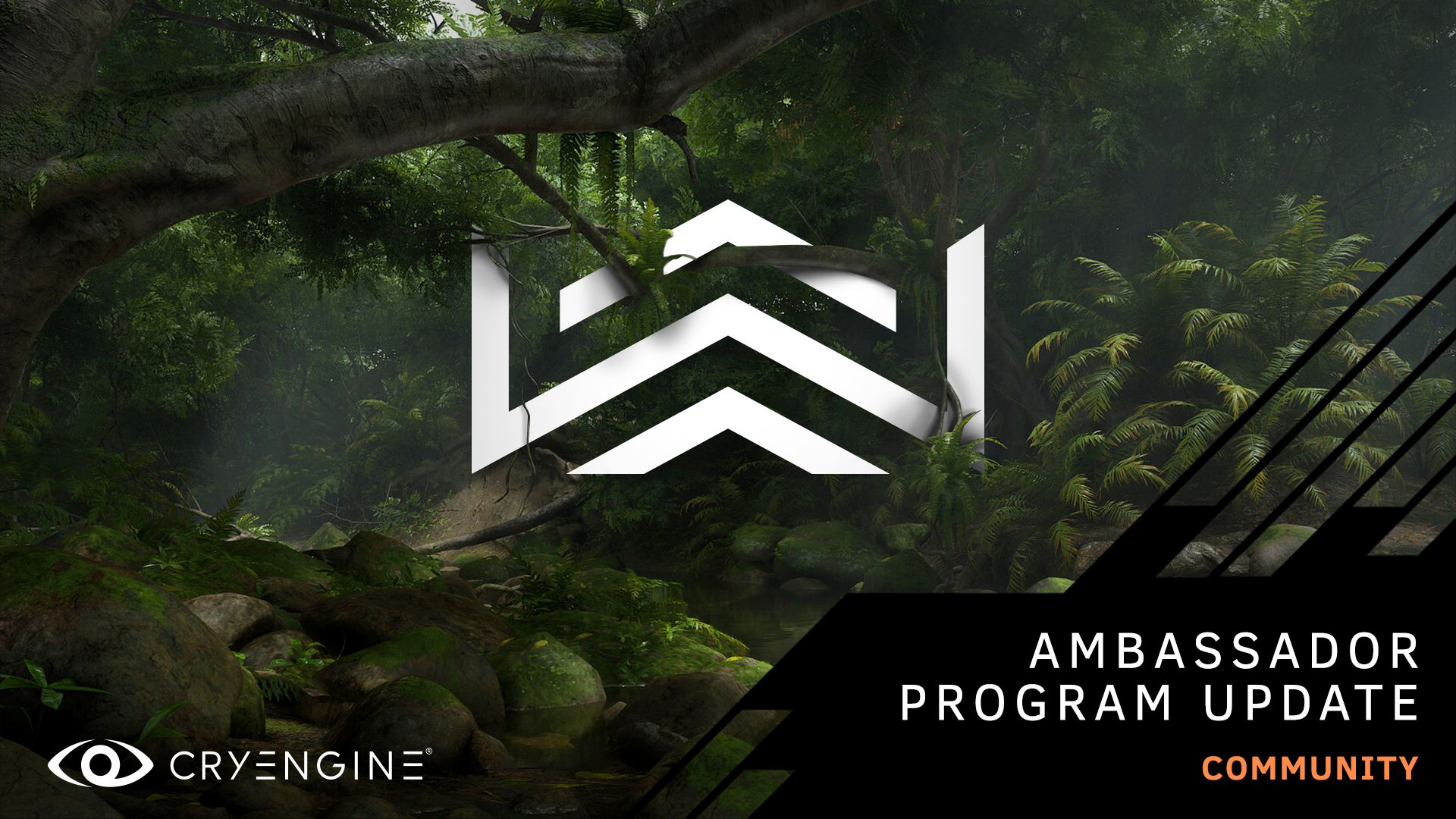
Indie Development Fund Spotlight - Dinosaur Battlegrounds
It's Jurassic Park meets CRYENGINE. A mighty Tyrannosaurus Rex battles fiercely with a Stegosaurus. Two iconic dinosaurs locked into a do-or-die struggle for survival. Only, this isn't the Mesozoic Era, it's the present day. And these incredibly realistic dinosaurs are being brought to life with the power of CRYENGINE. Now, prepare to go prehistoric as we dive into Dinosaur Battlegrounds, part of our special lineup of projects submitted for the CRYENGINE Indie Development Fund!
Dinosaur Battlegrounds is the product of Evolving Arts Studios, currently engaged in bringing the fierce life-and-death struggle of everyday existence in the Mesozoic Era to life with the unparalleled power of CRYENGINE. A visceral survival game, enter as a vicious Tyrannosaurus Rex or the formidable Stegosaurus and do battle, sustaining yourself with whatever resources you can find, be it water, vegetation, or the carcasses of your fallen foes. Build up your strength, explore the world of prehistoric Hell Creek, and do battle with those who would threaten your territory.But what makes Dinosaur Battlegrounds so unique? It's the dedicated work of student paleontologist and character designer Kyle Weltman, whose unique perspective has brought to life some of the most realistic and anatomically correct renderings of dinosaurs ever seen in a video game. Using taxonomic and ecological data as well as fossil evidence, the musculature, anatomy, and even the likely color of any given dinosaur can be inferred.

"The game...will be to our best efforts accurate in every detail..."
So we got together with project leads Forrest Haller and Kyle Weltman to learn more about this fascinating project.
In a ninety-nine words, how would you describe Dinosaur Battlegrounds? In other words, what will the gameplay mainly consist of, what will the player look forward to?
Dinosaur Battlegrounds is a prehistoric survival game that will take the player back in time to the age of the dinosaurs. The game will be located at Hell Creek and will be to our best efforts accurate in every detail that is agreed upon by the paleo-science community. The player will have the decision to control a T-rex or a Triceratops. Each of these animals will have unique control schemes and survival needs. Constant struggles to forage, pursue (or be pursued), and fight will test your strength to live like a dinosaur. So unlike in many other survival games, you are not controlling a human protagonist but will in fact go feral and fight as the prehistoric beast themselves.
What inspired you to create Dinosaur Battlegrounds? Was there any external interest that drew you to dinosaurs in particular?
Dinosaur Battlegrounds was inspired by a fascination for dinosaurs, and my love for science. I have always loved dinosaurs, and the inaccurate portrayals of their biology and anatomy in the media has never sat well with me. I want to show people what the world of dinosaurs was truly like.

"I want to show people what the world of dinosaurs was truly like"
Besides dinosaurs, what other things of note can players expect to see in the finished game? Will flora and fauna be correct for the period? Did this impose any difficulties during production?
Dinosaurs are only a small component of what you can expect to see in the finished game. One of the reasons we chose Hell Creek as our first formation was because it is one of the most well-sampled fossil formations from the Mesozoic, and has an incredible diversity of both flora and fauna. Trying to list them here would take up a lot of space, but I can tell you that you can expect a great diversity of turtles in the waterways, several crocodilian species, many different multituberculates in the trees, and the enigmatic Champsosaurus in the river systems. This can be difficult sometimes, as it requires lots of models and research, and new species are still being discovered. However, as a paleontologist (undergraduate, working with vertebrate paleontology) I have contacts both at my University and at other institutions and can get access to fossils that are unavailable to the public.

"...expect a great diversity of turtles...crocodilian species...multituberculates...and the enigmatic Champsosaurus"
Although I've never seen a dinosaur in real life, I have to say your character art is some of the most realistic I've seen yet. Can you describe the process you used to get such realistic models?
The process can take a while, but it is worth it. The first step involves extensive research into the taxon - its anatomy (for muscle proportions and whatnot), ecology (for color choice), etc. We refer to specific fossils as much as possible - the mandibular dentition on our Borealosuchus sternbergii model, for example, was directly projected from images of the Holotype specimen of the species. Unfortunately, sometimes a species is based on remains that are too fragmentary to make a full reconstruction on (examples include Acheroraptor, Richardoestesia, and all of the Polyglyphanodont lizards) - in these cases, we take one of two different approaches. The ideal approach is to look at where the taxon is placed in a phylogenetic tree, and we reference remains its closest relatives to fill in the gaps. For example, the postcranial anatomy of the Acheroraptor model is based on Velociraptor, and Richardoestesia is based largely on Troodon. The greatest benefit of working with paleontologists is that I can have direct access to fossils, and I get to be involved in the work finding the actual fossils in the field. This gives me great inspiration for level design - the demo map is actually based on a specific site that I was at this summer where we excavated remains from a subadult T. rex that appears to have been pregnant when she died.

"The demo map is actually based on a specific site where we excavated remains...from a T.Rex..."
Can you describe any difficulties you encountered in production, and how you overcame them?
I would say that some of the difficulties we've encountered involve flora. The main issue we've had is that fossil plant species are almost always based on single leaves (or small clusters, if you're lucky). This means that we don't always know if that species was a shrub, tree, etc., which can cause issues when we are trying to recreate certain areas. Furthermore, coming up with vegetation densities and distributions can be a bit difficult. However, I have been doing my own research, and have been consulting with paleobotanists in order to make sure we have the best possible picture we can.
What are your long term goals for the project?
My long-term goal has always been to make Dinosaur Battlegrounds more than just a game. I want it to become an actual paleontology modeling software that can be used for academic research purposes, as it has the potential to answer important questions and give valuable insights that are not possible with current model system software. For example, you could make population distribution models for different species, or even investigate whether or not there are gene flow barriers within the formation that split up populations. Dinosaur Battlegrounds is a project that could revolutionize the field of paleontology, and in my opinion that is the most exciting prospect of this entire project.

"I want it to become an actual paleontology modelling software...as it has the potential to answer important questions..."
That's it for this community spotlight! Stay tuned for the next feature in our Indie Development Fund Series and make sure to check out the Dinosaur Battlegrounds Indie Development Fund Page and show your support!



